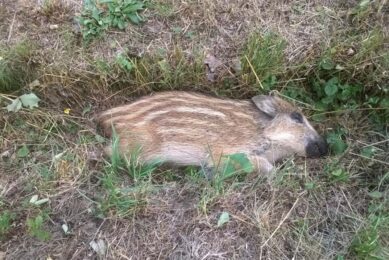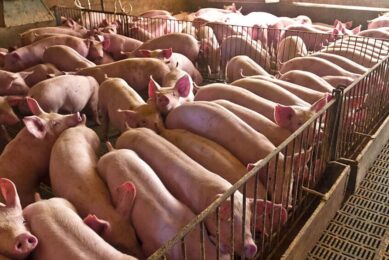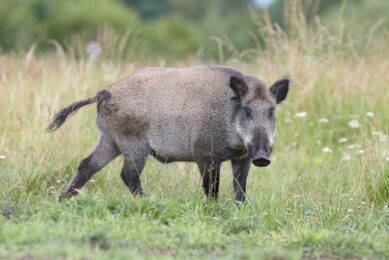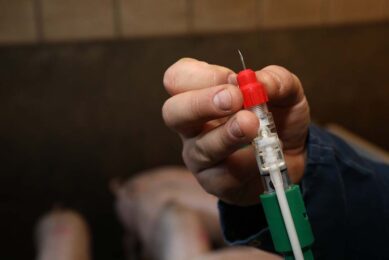The Russian pig ban – 2 years on

What were the consequences of Russia’s ban on EU pigs, pork and specific pig products? The country stopped importing almost 2 years ago. Time to reflect.
First things first – the ban. It all started in January 2014, when the first outbreaks of African Swine Fever (ASF) hit Lithuania and Poland. As a consequence, Russia decided to close its borders for pigs, pork and certain pig products.
Just half a year later, the rest of the EU’s agriculture also faced a trade ban with Russia. Due to rising geopolitical tensions over Ukraine, the EU and Russia embarked on a mutual agricultural trade ban, which hasn’t been lifted to this today.
Also read:
“African Swine Fever is a man-made disease”
Is African Swine Fever a threat to Europe’s pig production? The knowledge can be found at Germany’s Friedrich-Loeffler-Institut. For scientists Dr Klaus Depner and Dr Sandra Blome, the virus has few secrets left. “Most problems are a matter of human misbehaviour.”
Pig producers quitting business
For Europe’s agriculture, the task was simple: time to find new trade partners rapidly. For some sectors within agriculture, this has gone really well. For instance, the Dutch vegetable production sector has been outstanding, mainly because crops in Poland and Spain proved to be relatively bad due to warm weather.
For pig production, however, weather conditions do not play an enormous role. Having been hit by the ‘double ban’, the year 2014 created a situation of lasting oversupply which caused pig prices to decrease in 2015.
Pig producers, already under permanent pressure due to investments to meet environmental and welfare regulations, suddenly found themselves confronted with a loss of cash flow. Without diving into numbers and figures, just some examples to indicate the situation in various European countries in January 2016.

In many other countries in Europe, comparable stories can be told. In September 2015, the European Union (EU) therefore initiated a large €500 million support plan to temporarily alleviate the hardships of Europe’s pig industry.
It’s not rocket science though to say that that is not a sustainable situation. I cannot see a relaxation of the trade bans happening any time soon – and even if the political tension does wither away, it is worth asking the following questions: How to realise substantially higher pig price rises – and more fundamentally – what does the future hold for pig production in Europe?
The future for pig production in Europe
My crystal ball says about that last question: yes, there is definitely a future market for pigs, but it is likely to differ substantially from the market we see today. Irrespective of the question whether immense export opportunities will arise, customers in Europe shall get more critical towards ways of production and continue to ask for pork produced more sustainably, more extensively, with pigs enjoying more welfare.
As a consequence, these regulations will also apply to weaners reared for exporting to Russia (when allowed) or China (when required).
Achieving higher prices
Back to that other question – increasing pig prices. Laws of economy apply here. Either by increasing demand or by lowering supply. Call it a long-term pig cycle.
The crystal ball prophecy is seen by some. Some producers opt for the option to increase demand – or perhaps it’s even better to say to create new demand. They think about a further change in production style in combination with some decent marketing. Meeting the critical customer, they give him/her that sustainable piece of pork. This can vary from specifically branded pork (grown in e.g. Belgium/ France/ Netherlands) or grown entirely organic – and have it sold as such.
Others opt to continue doing what they are doing nowadays. Some might survive, others will go out of business, until the market finally finds a new balance.
Pig producing population of the future
The pig producing population of the future is therefore formed by a happy few that steered their business in a different, more extensive direction – and those capable and highly skilled farm owners who survived the storms involving challenges from all directions.
So, in a way, we have to thank the Russian boycott, as it revealed Europe’s Achilles heel. With all good intentions leading to strict welfare and environment regulations it has become increasingly difficult for regular pork producers to compete. Only those with a plan will survive.
It all supports my conviction that in the long run, pork will grow from being a commodity towards becoming more of a luxury product. And don’t get me wrong – that is well deserved.
Join 18,000+ subscribers
Subscribe to our newsletter to stay updated about all the need-to-know content in the pigsector, three times a week. Beheer
Beheer










 WP Admin
WP Admin  Bewerk bericht
Bewerk bericht